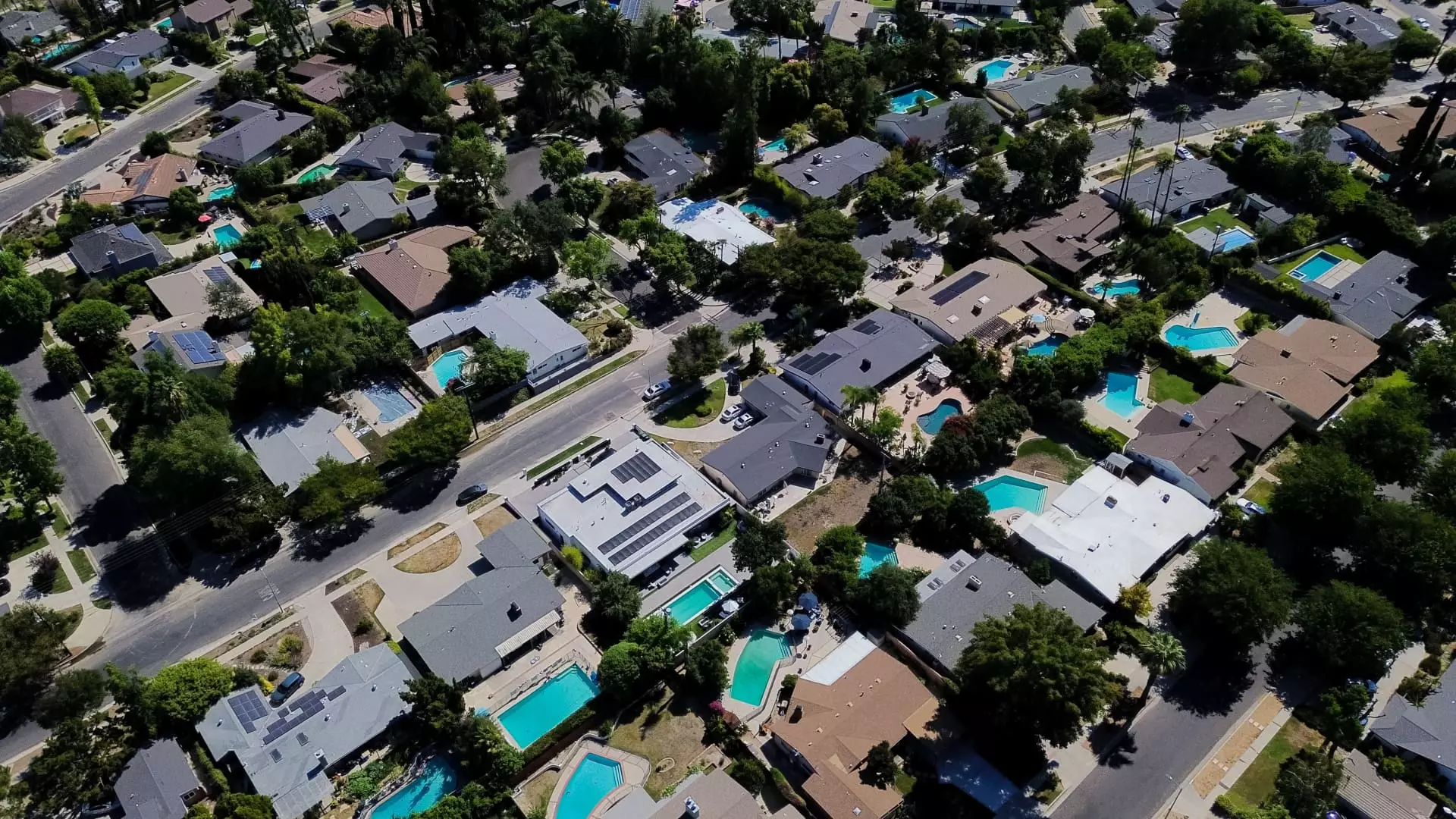The recent slump in existing home sales, dropping 2.7% in June, signals more than just a minor market hiccup; it’s a clear indication of a deep-rooted structural imbalance that capitalism’s current trajectory fails to address effectively. This decline, which defies optimistic forecasts of a mere 0.7% decrease, exposes the fragility of the American housing market. It reveals how soaring mortgage rates—hovering around 6.77%—create an insurmountable barrier for first-time buyers, effectively freezing them out of an otherwise vital pathway to financial independence and stability.
While some might find comfort in the idea that supply is increasing, the truth is that this rise—up 15.9% from last year—only underscores the chronic underbuilding crisis. The current 4.7-month supply remains below the balanced threshold, hinting that the market remains skewed in favor of sellers, especially in the high-end segment. Underneath these statistics lies a disturbing trend: a market that is increasingly segmented and stacked against the average American family striving to attain a first home. This imbalance exacerbates economic inequality and widens the wealth gap, and it’s a direct result of policy neglect and a failure to boost sustainable construction.
Price Growth Despite Demand Drought
It’s perplexing that home prices continue to rise—up 2% year on year to a median of $435,300—despite falling sales. This stubborn price inertia is rooted in a fundamental scarcity of supply rather than genuine demand. The record-setting prices reflect a market that is less about affordability and more about strategic bidding wars among wealthier buyers. The fact that homes priced above $1 million have surged 14% suggests an increasing polarization, where wealth accumulates in luxury real estate at the expense of average Americans.
This phenomenon points to a lack of sensible, forward-looking policies that could ease the housing crisis. Instead of addressing supply shortages, the market is becoming a playground for investors and the well-heeled, further fueling the inflation of home values. Meanwhile, first-time buyers, who are supposed to be the backbone of a healthy housing market, are curbed and constrained, with their share dropping to just 30%. Such a decline underscores that our market is losing its diversity and resilience.
The Impact of Economic Stagnation on Household Wealth
The apparent resilience of higher-end markets masks the hardships faced by the average American household. While wealth among homeowners has increased by nearly $141,000 over five years, this benefit is largely confined to the affluent. Middle and lower-income families find themselves increasingly priced out, leaving many to rent or remain in unstable housing arrangements. This, in turn, hampers upward mobility and perpetuates a cycle of economic stagnation for the middle class.
The prevalence of cash deals—nearly 29%—indicates a market driven more by investor speculation than genuine owner-occupier activity. This phenomenon inflates property values and reduces turnover, further constraining inventory for true homebuyers. Additionally, with homes now spending an average of 27 days on the market—up from 22 last year—there’s an unmistakable cooling effect at the entry level, which is essential for nurturing new homeowners.
A Bleak Future Without Policy Intervention
The current trajectory indicates that, absent decisive policy intervention, the housing crisis will deepen. The lag in construction—failing to keep pace with population growth—means the structural deficiencies are only widening. A market in which affordability erodes alongside rising prices will inevitably lead to increased social stratification and economic disparities.
The stubbornly high mortgage rates sow disillusionment among prospective homeowners, effectively dampening future demand. Lower-income households, already marginalized, face continued hurdles accessing affordable, quality housing. Meanwhile, the affluent continue to capitalize on a distorted market, pushing the entire system toward a breaking point. If policymakers fail to recognize the urgency of addressing supply shortages and ease mortgage conditions, the American Dream will remain just that—a distant illusion for most.

